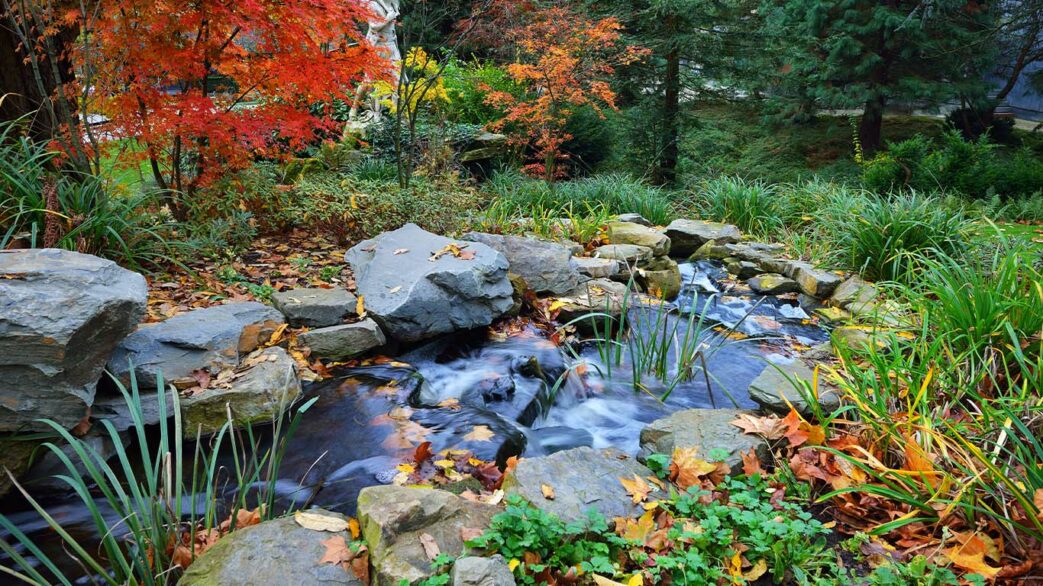A nip in the air, shorter days, and the shedding of multi-colored leaves from the trees signifies a changing of the seasons. Hello Autumn! Although we have been having some lovely warm weather, gardeners across the country are starting to take precautions to protect their landscapes from the harsh reality of winter. Water features in the landscape require special consideration when putting your pond to bed for a long winter’s nap.
Pond maintenance for the Autumn and Winter vary depending on where you live, this month we are covering some basic guidelines to help your aquatic plants, resident aquatic life and finned friends brave the winter weather that is swiftly approaching. Following is a handy checklist to help ensure a healthy pond come spring time.
Remove decaying plant matter
Remove decaying organic plant matter such as leaves and foliage from plants that produce toxic gases that can harm your aquatic life, so you want to remove this before winter rolls into town. You don’t need to remove every single last leaf, but try to remove the majority. Use a long handled pond net to scoop them out. Also check your skimmer basket or intake bay more frequently and remove any leaves that are still caught inside.
Trim back pond plants
Trim back marginal pond plants such as iris and deciduous grasses to around plants to 50mm above the water to keep the dead foliage from drooping over into the pond. Anything that is going to go to mush and rot quickly is worth getting rid of. Any plants that have large woody stems such as Purple Loosestrife can provide great hiding stops for an assortment of mini bugs and beasties, we recommend you trim your plants back carefully and think about the bugs before you chop.
Cut water lilies down
Cut water lilies down to as far as you can get them without damaging the rhizome. Make sure you only trim back the leaves and flowering stems that have started to go brown. This keeps dead foliage from decomposing in the pond. It would not be unheard of that some water lilies will keep green leaves all winter, we do not want to remove these as this can affect the flowering success for the following year.
Add beneficial bacteria
Add beneficial bacteria to the pond, if you are not already adding beneficial bacteria throughout the year please ask for advice as this is really important to help your ecosystem. Once the temperature drops below 10 degrees Celsius it is recommended to switch to cold water bacteria as they are more productive during the colder months.
Stop feeding fish summer food
Stop feeding fish summer food once temperatures drop below 10 degrees Celsius. They need to get ready for the dormancy period and you’ll want to avoid any metabolic complications as their digestion slows right down during the cold months. Once the temperatures are below 10 degrees Celsius for a few weeks you can start to feed them with a winter food such as wheatgerm, this breaks down slowly in their gut and does not cause issues. This should be fed infrequently and should stop once the fish have settled at the bottom of the pond for the harsher colder weather.
Create additional habitats
Creating additional habitats for your garden creatures. Autumn is a great time to start to make some additional log piles and bug hotels to give these little animals the best chance of overwintering.


